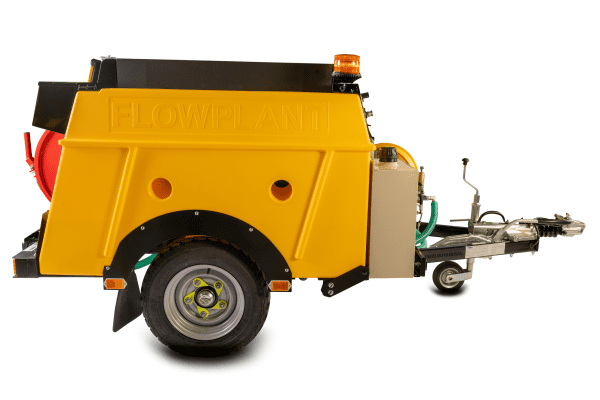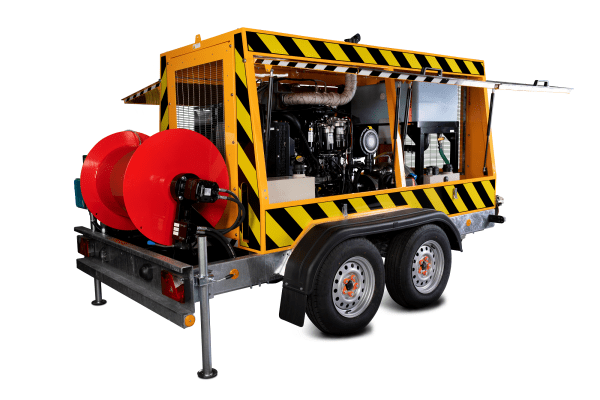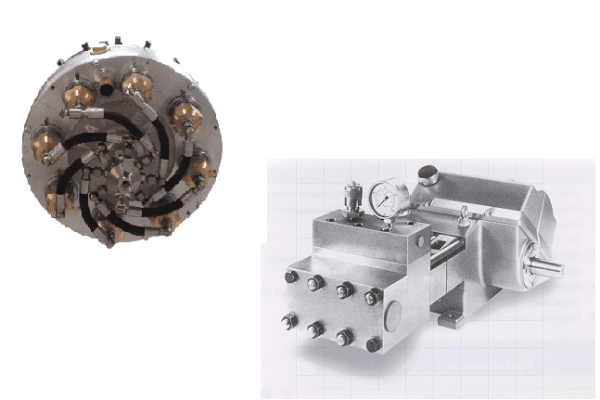News
Pressure Losses in Hoses and How They Affect Jetting Performance
When it comes to high-pressure jetting, the performance of your equipment is not just about pump power—it’s also about ensuring that the water pressure is maintained throughout the system. One critical factor often overlooked is pressure losses in hoses, which can significantly impact jetting efficiency. Let’s dive into the factors that contribute to pressure losses and how this can affect the performance of your jetting equipment.
What Causes Pressure Loss in Hoses?
- Hose Length:
The longer the hose, the greater the distance the water must travel, resulting in a higher loss of pressure. Each meter of hose adds friction, slowing down the water flow and reducing the overall pressure at the nozzle. This is particularly important in drain and sewer cleaning, where the distance the hose travels can be substantial.
- Hose Diameter:
The internal diameter of the hose plays a crucial role in how efficiently pressure is maintained. A smaller diameter restricts water flow, increasing friction and pressure loss. For example, using a ½-inch hose instead of a ¾-inch hose will result in more pressure loss over the same length, affecting the cleaning power at the nozzle.
- Hose materials:
Water moving through the hose generates friction between the water and the internal walls of the hose. The rougher the internal surface, the greater the friction loss. Regular inspection of your hoses for wear can help reduce friction loss and keep pressure levels optimal.
- Hose Condition:
Worn, kinked, or damaged hoses will also contribute to higher pressure loss. Over time, repeated use can cause the hose material to degrade, especially in high-pressure environments, leading to reduced jetting performance.
How Pressure Loss Impacts Jetting Performance
The effectiveness of high-pressure jetting relies on delivering sufficient pressure at the nozzle to dislodge blockages and clean surfaces efficiently. Pressure loss in the hose reduces the force available at the nozzle, impacting performance in several ways:
– Reduced Cleaning Power: With lower pressure at the nozzle, your equipment may struggle to remove stubborn debris or penetrate deeper into the pipe, making jobs take longer and potentially reducing the quality of the clean.
– Increased Energy Consumption: To compensate for the lost pressure, operators may push the equipment harder, which can increase fuel or energy consumption. This not only raises operational costs but also puts more wear on the pump and other components.
– Higher Wear and Tear on Equipment: Operating equipment harder to compensate for pressure losses in the system, can put additional strain on the pump and increase wear and tear on hoses and nozzles, leading to more frequent repairs and replacements.
Tips for Minimising Pressure Loss
- Choose the Right Hose: Opt for the correct hose length and diameter for the job. Shorter, larger hoses reduce friction and maintain higher pressures at the nozzle.
- 2. Regular Hose Inspections: Check for any wear, kinks, or damage regularly. Replacing worn-out hoses promptly will help maintain efficiency and avoid unnecessary pressure loss.
- Use Quality Hoses: High-quality hoses with smooth internal linings reduce friction and maintain better pressure over longer distances.
- Monitor Your Equipment: Keep an eye on pressure gauges during operation to identify any sudden drops in pressure, which could indicate hose problems or the need for maintenance.
Conclusion
In high-pressure jetting, maintaining optimal pressure throughout the system is key to achieving the best results. Pressure loss in hoses, while often overlooked, can have a significant impact on jetting performance, leading to inefficiency, increased costs, and equipment wear. By understanding the factors that contribute to pressure loss and taking steps to mitigate them, you can ensure your jetting equipment operates at peak performance, job after job.
For more information on maintaining your equipment and minimising pressure losses, don’t hesitate to reach out to us at Flowplant Group Ltd. Our expert team is here to help you keep your operations running smoothly.
Contact us today to learn more about our range of high-pressure hoses and equipment solutions!









